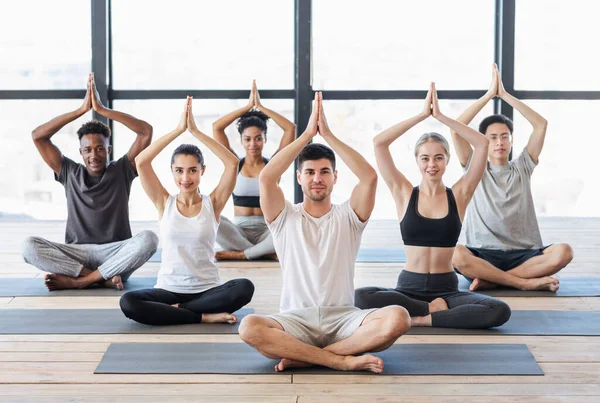Group Yoga Poses: A Path to Wellness, Connection, and Balance
Yoga has long been celebrated for its ability to bring peace, flexibility, and strength to the individual. But in recent years, more and more people are discovering the unique power of practicing yoga in a group setting. Group yoga poses allow participants to connect with each other on both physical and emotional levels, enhancing the benefits of traditional solo practice. These poses foster teamwork, enhance communication, and offer a sense of shared mindfulness that deepens the yoga experience.
In this article, we’ll explore the world of group yoga poses, offering insight into how they can enhance your yoga practice and foster a sense of community. Whether you’re a seasoned yogi or a beginner, group yoga offers something special for everyone. Along the way, we’ll also touch on LSI (Latent Semantic Indexing) keywords that relate to group yoga, such as partner yoga, acro yoga, trust, balance, and connection, to give you a comprehensive understanding of this enriching practice.
What Are Group Yoga Poses?
Group yoga poses are yoga postures designed for two or more participants. These poses require synchronization, balance, and often, a degree of trust between partners. They can range from simple stretches to more complex acrobatic feats, depending on the level of the participants. Practicing yoga in a group allows for a deeper connection with others, encouraging shared energy and collaboration.
One of the most popular forms of group yoga is partner yoga, which involves two people working together to perform postures that stretch, balance, and strengthen the body. Another dynamic variation is acro yoga, which blends yoga with acrobatics to create powerful and playful movements. Regardless of the style, the common thread is teamwork, trust, and communication.
Benefits of Group Yoga Poses
Builds Trust and Communication
Group yoga poses require participants to communicate and rely on each other to maintain balance and proper form. This reliance fosters trust, whether you’re practicing with a long-time friend, partner, or even a new acquaintance. In poses like Double Downward Dog or Flying Bird in acro yoga, one partner supports the other in ways that require full-body trust and communication.
In group settings, this trust-building extends beyond physical reliance. Many practitioners report that their emotional connections with partners deepen as they learn to trust each other’s strengths and vulnerabilities. Group yoga can be especially beneficial for those looking to strengthen relationships, whether romantic or platonic.
Enhances Balance and Coordination
Balance is a core element of yoga, and in group poses, the challenge is often doubled or tripled. When multiple bodies are involved in maintaining a posture, everyone has to stay mindful of their positioning and movement. Poses like Partner Tree Pose or Seated Forward Fold (performed back-to-back) encourage participants to synchronize their movements, improving their own sense of balance while also staying attuned to their partner’s body.
This need for coordination makes group yoga excellent for honing focus and precision. It also offers a fun challenge—something about balancing with others often brings a sense of playfulness and experimentation to the practice.
Strengthens Connections and Community
Yoga is often seen as an individual journey, but in a group setting, it becomes a shared experience. Whether you’re in a yoga class or just practicing with friends, group yoga brings people together in a meaningful way. This sense of community is one of the most powerful aspects of group yoga poses, and it’s why many yoga practitioners gravitate toward these experiences.
Beyond physical touch and interaction, there’s an energetic exchange happening in group yoga that fosters a sense of unity and belonging. Being part of a synchronized group working towards a common goal (whether it’s achieving a pose or simply flowing together) can be deeply satisfying and reaffirming.
Improves Flexibility and Strength
Many group yoga poses, especially partner-based poses, allow for deeper stretches and postures that would be challenging to achieve solo. For example, in a pose like Double Camel Pose, two practitioners kneel back-to-back, offering each other support to lean deeper into the stretch than they might be able to on their own.
In more advanced group poses like Acro Yoga’s Flying Whale, participants use each other’s strength to create stunning and challenging postures. These poses often work the core, arms, and legs in ways that solo practice doesn’t, making group yoga a fun and effective way to build strength.
Popular Group Yoga Poses
Partner Boat Pose (Navasana)
Sit facing your partner with knees bent. Hold hands, and lift your feet, pressing the soles together as you balance on your sit bones. Extend your legs upward, creating a “V” shape with your bodies. This pose strengthens the core and improves balance.
Double Downward Dog
One partner assumes a traditional Downward Dog pose, while the other partner places their hands on the ground a few feet in front of them and lifts their feet onto the lower back of the first partner. This pose requires trust and offers a great shoulder and back stretch for both participants.
Flying Bird (Acro Yoga)
One partner lies on their back with legs raised, while the other stands in front. The standing partner leans forward, placing their hips on the base partner’s feet, who then lifts them into the air. This acrobatic pose builds strength, balance, and trust.
Back-to-Back Seated Forward Fold
Sit back-to-back with your partner, both in a seated position with legs extended forward. One partner leans forward while the other leans back, using each other for support. This pose offers a deep hamstring stretch and a sense of grounding.
Group Warrior Circle
Stand in a circle with several participants. Each person assumes Warrior II pose, extending their arms to connect with the person next to them. The group moves together, transitioning through different warrior poses, creating a sense of unity and flow.
How to Get Started with Group Yoga
If you’re new to group yoga, it’s best to start with a few simple poses to build confidence and familiarity. Here are some tips to make your group yoga experience more enjoyable:
Find the Right Partner(s): Whether it’s a friend, family member, or a group from a yoga class, it’s important to practice with people who are open to communication and collaboration.
Communicate Clearly: Before starting any pose, talk through your plan with your partner(s). Clear communication helps prevent injury and ensures everyone feels comfortable.
Stay Present and Mindful: Group yoga requires you to stay fully present, not only with your own body but also with your partner’s needs. Practice mindfulness to ensure you move safely and harmoniously with others.
Have Fun: Group yoga is often more playful than solo practice. Don’t be afraid to laugh, experiment, and enjoy the shared experience!
Conclusion
Group yoga poses offer a beautiful blend of physical challenge, emotional connection, and community building. By practicing these poses, participants can deepen their trust, improve their balance, and build a sense of connection with others. Whether you’re diving into partner yoga or exploring the playful world of acro yoga, group poses open up new possibilities for your practice.
If you’re looking to strengthen both body and relationships, or simply want to experience the joy of shared movement, group yoga is the perfect practice for you. Embrace the power of teamwork, trust, and balance—and discover a deeper connection to yourself and those around you through the practice of group yoga poses.
Read More: Can Yoga Really Help You Lose Weight?






